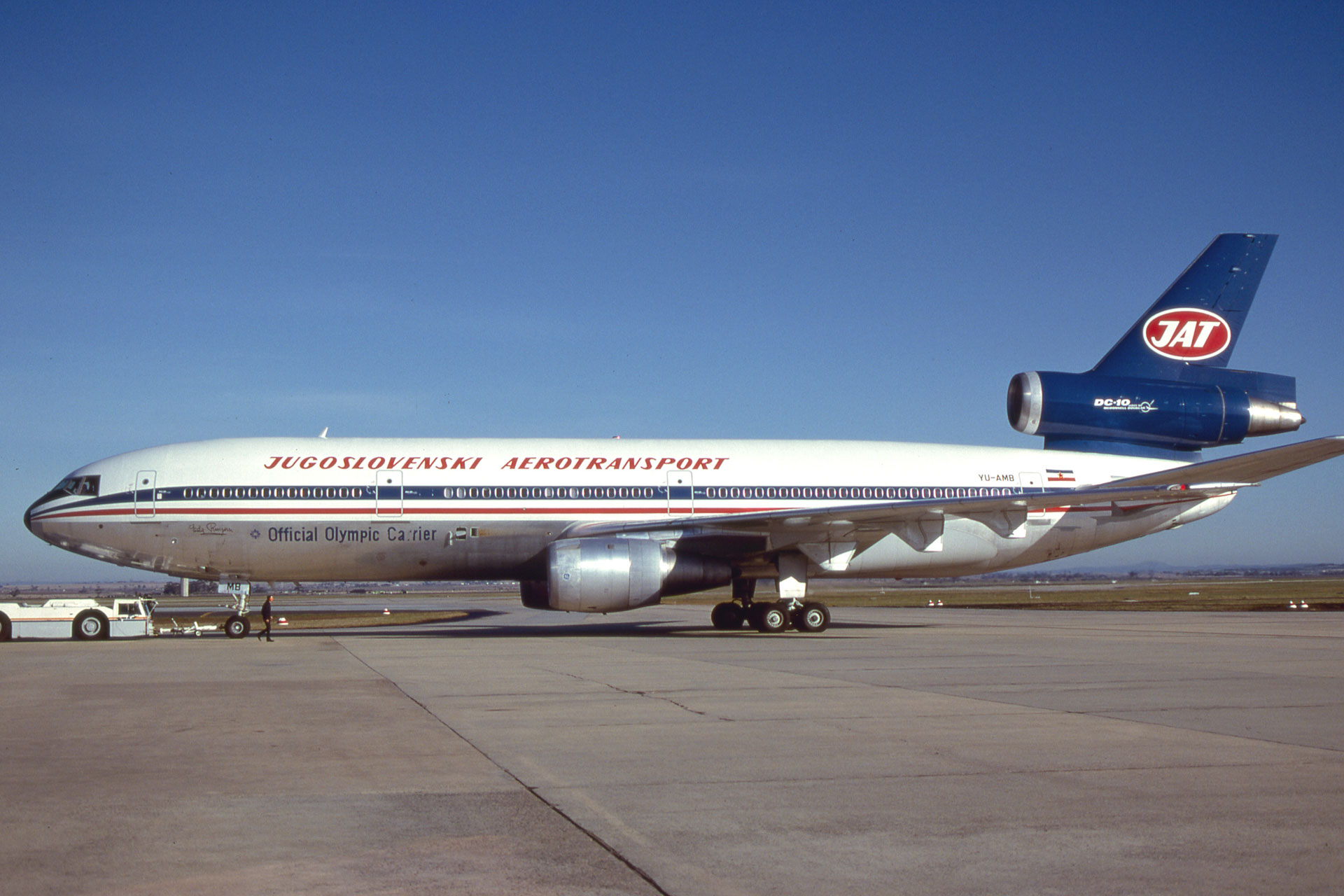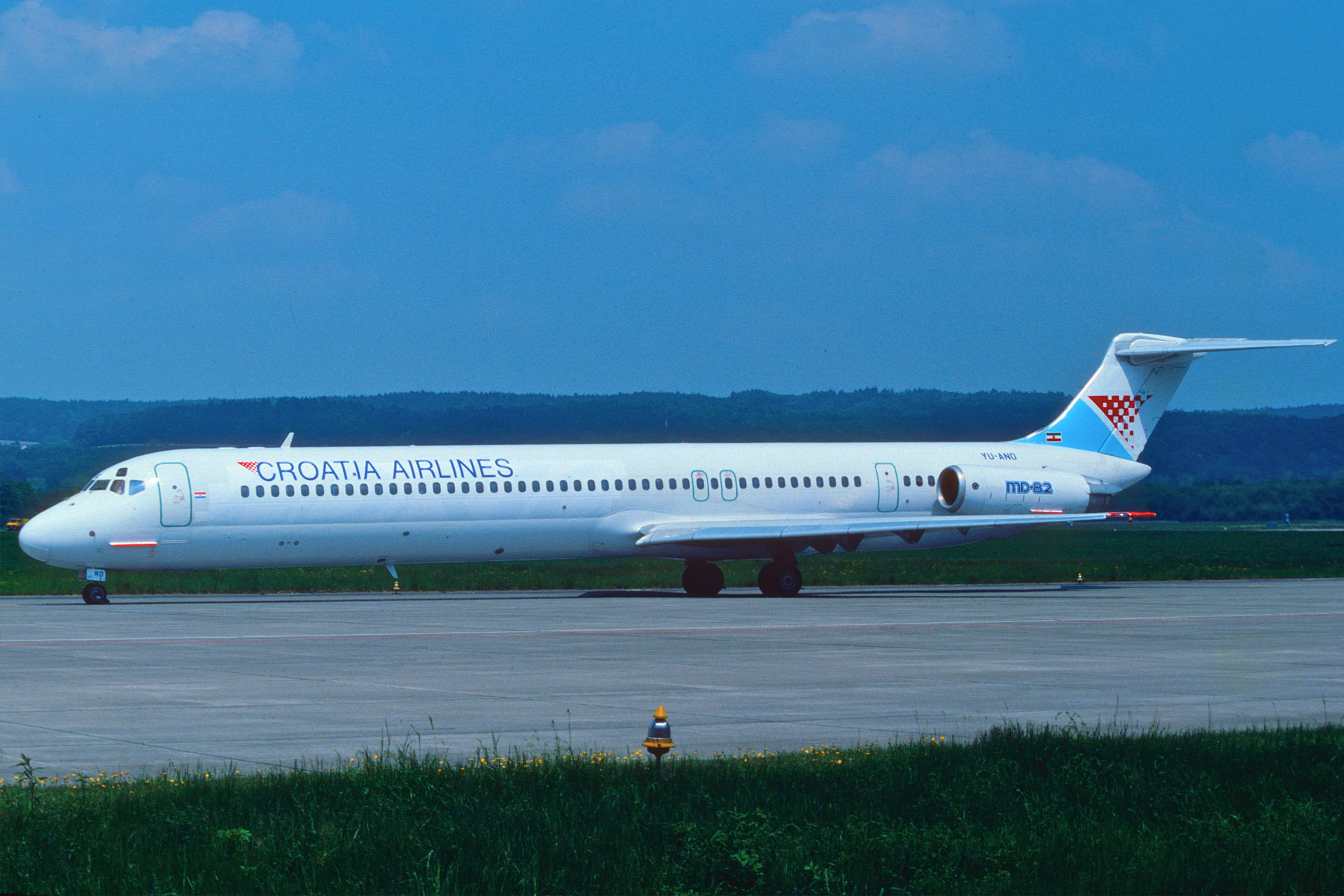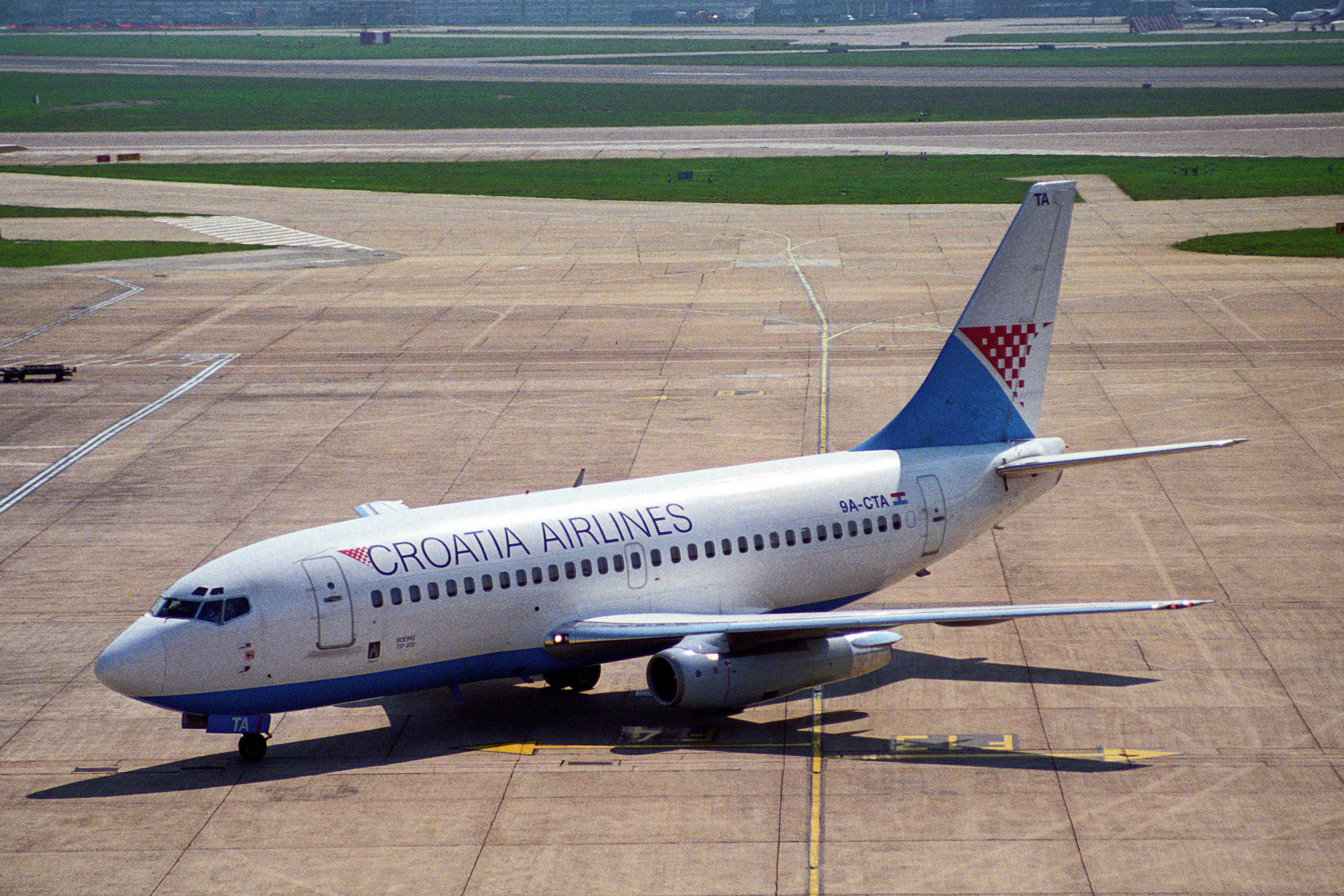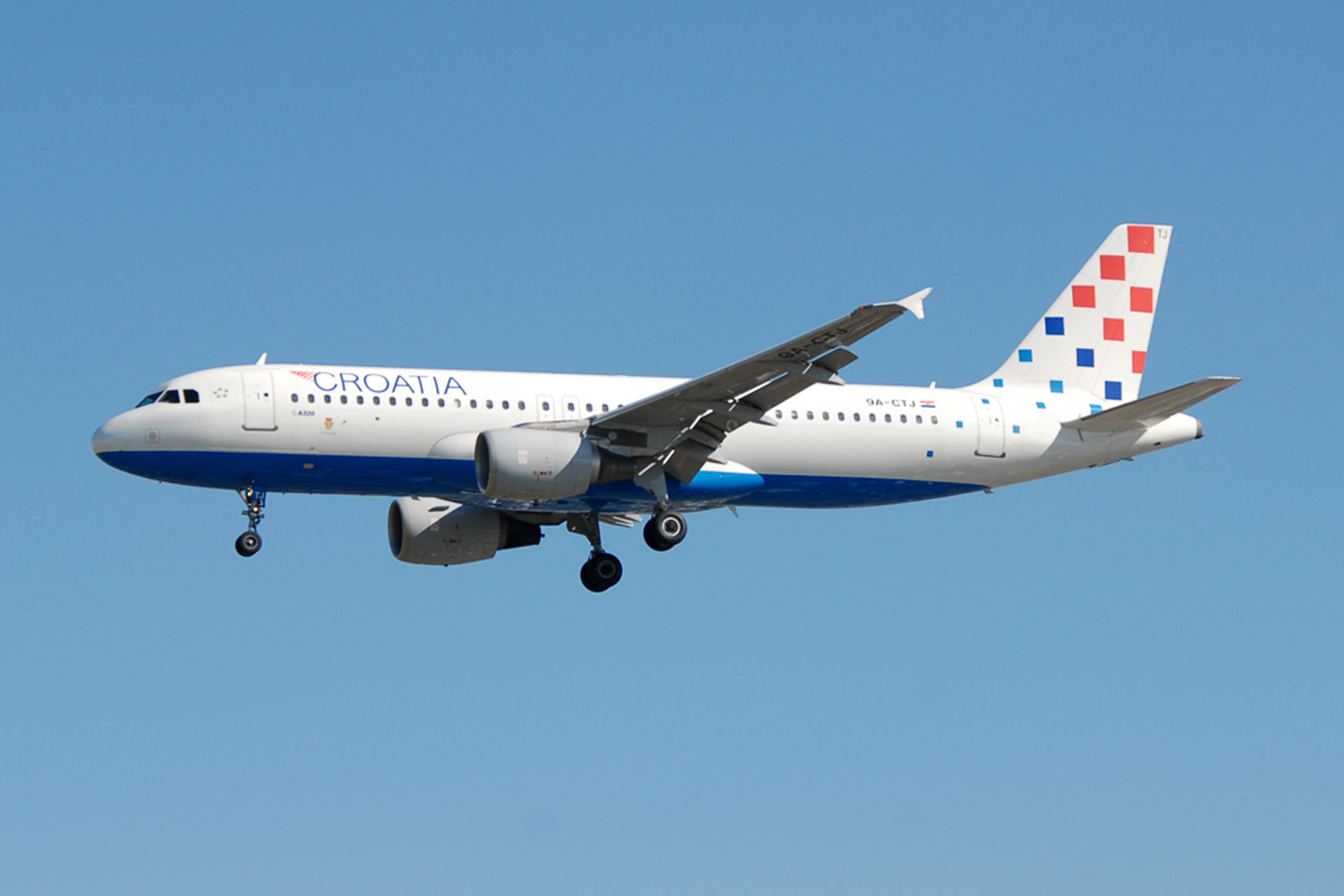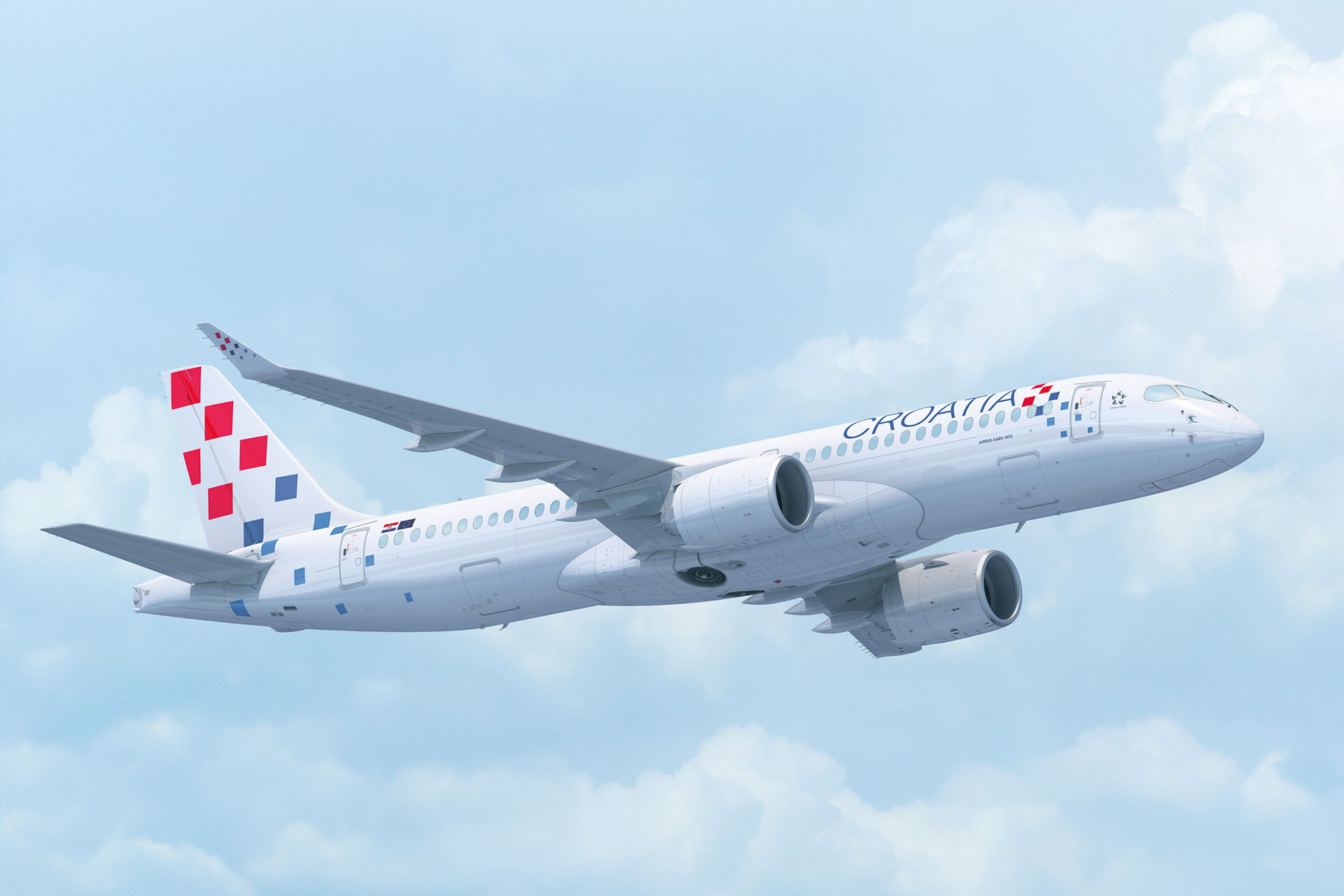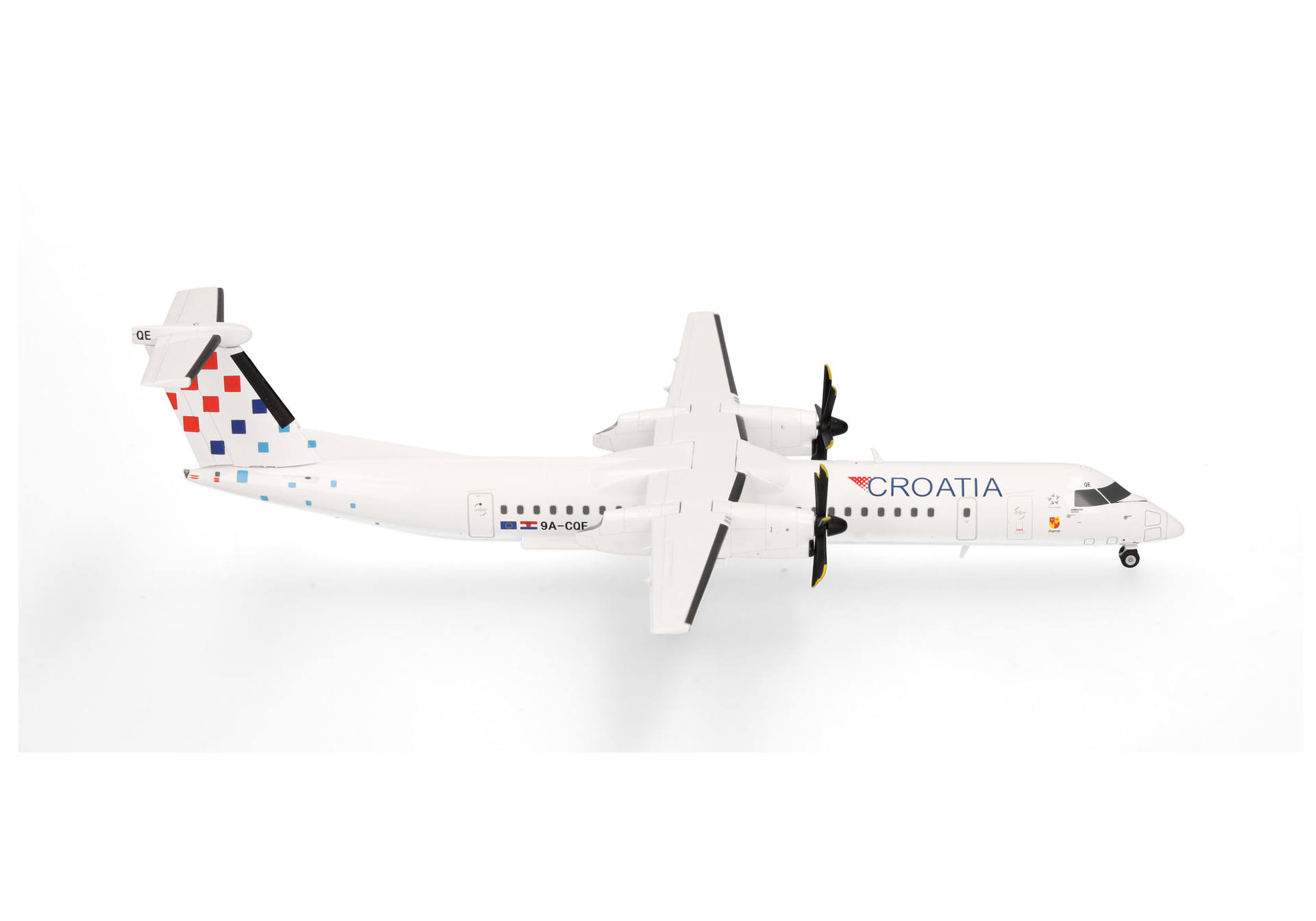Croatia Airlines
Airline for the Adriatic
With its 1,800 km of coastline on the Adriatic Sea and numerous offshore islands, Croatia, among the former six Yugoslav republics, enjoys the right conditions for a blooming tourism industry. In fact, almost 20 % of the country’s gross domestic product comes from tourism revenue. The national airline Croatia Airlines also benefits from this strong economic factor.
Even before the bloody disintegration of the multi-ethnic state of Yugoslavia in 1991, tourism in the Socialist Federal Republic was mainly concentrated in the Republic of Croatia due to its geographical location, which covered almost the entire coastline of Yugoslavia with the exception of small sections of Slovenia and Montenegro. Moreover, Croatia’s relatively moderate leadership under President Josip Broz Tito, compared to other socialist countries, played a key role in the founding of the non-aligned states movement, initially numbering 25, as he increasingly distanced himself from the centrally administered Soviet Union and established his own socialist state model with self-governing and competing companies under worker self-administration. Meanwhile, Yugoslavia had always been more oriented towards the West than the other socialist countries in Eastern Europe. Even before Croatia's independence, the Yugoslavian coast on the Adriatic Sea with its sunny climate and beautiful landscape was one of the most popular European destinations for tourists from Western Europe, alongside Italy and Spain. At the time, Yugoslavia's air traffic was largely organized by the national Yugoslav Aerotransport (JAT), with bases in Belgrade and Zagreb. It was joined by other carriers like Inex Adria from the now Slovenian capital of Ljubljana and Aviogenex from the Serbian capital of Belgrade, in mainly operating (often rather lively) charter flights to the popular sunny destinations on the coast.
Until the outbreak of the civil war in 1990, JAT was the national airline of Yugoslavia, and therefore also represented the Croatian part of the country. It even operated long-haul scheduled flights from Zagreb, for example to the USA or Australia.
Photo: ClipperArctic_CC
The ethnic and religious differences between the republics, internal political conflicts, economic problems, and tensions between the richer republics of Slovenia and Croatia and the weaker regions of Yugoslavia all led to increasing nationalist aspirations and ethnic tension in the republics following the death of Tito in May 1980. The constituent republics’ first free elections in 1990 produced nationalist parliaments with secessionist tendencies to power. The declarations of independence by Slovenia and Croatia on June 25, 1991 finally led to war on several fronts, and military intervention by the Serb-dominated Yugoslav People's Army to prevent the state from crumbling, such as the Ten-Day War for Slovenia (1991), the Croatian War (1991-1995), the Bosnian War (1992-1995), and the Kosovo War (1999), which was finally brought to an end by NATO intervention in June 1999. Today, there are seven sovereign states on the territory of the former Yugoslavia: Slovenia, Croatia, Serbia, Bosnia-Herzegovina, Montenegro, North Macedonia and Kosovo, although the independence of Kosovo has so far only been recognized by 115 of the 193 UN member states.
Born in times of war
Croatia Airlines was founded as Zagal - Zagreb Airlines on July 20, 1989, initially operating cargo flights for UPS Airlines with the Cessna 402. The airline was a successor company to the Yugoslav JAT, which had to withdraw from air transportation completely due to its legal structure and its headquarters in Serbia. After the first democratic elections in Croatia, Zagal changed its name to Croatia Airlines in 1990. In 1991, Croatia Airlines started a connection between Zagreb and Split with a leased MD-82, but had to discontinue the route at short notice due to the war.
A single McDonnell Douglas MD-82 became the airline’s first jet in 1991, leased by Inex Adria. The latter was the most important charter company in Yugoslavian times, especially for Croatian vacation destinations, but had to withdraw to Slovenia after the Balkan War and did not survive the move.
Photo: AeroIcarus_CC
The second attempt was made in 1992. After the Federal Republic of Germany became one of the first countries to recognize Croatia's independence diplomatically, Deutsche Lufthansa provided considerable start-up assistance in financial, but above all in technical, operational, and organizational terms. After intensive preparatory work, Croatia Airlines took over three Boeing 737-230Bs from Lufthansa, which were used to operate international scheduled flights as well as charter flights to Dubrovnik, Split, and Pula, for example. To ensure full utilization of capacity, Croatia took over the tour operator Obzon in 1993, acquiring two more Boeing 737-230Bs. Domestic traffic became a mainstay of the airline, to which end ATR-42 and -72 turboprops were added to the fleet. They were later replaced by Bombardier Q-400s.
In 1992, the ex-Lufthansa Boeing 737-230B with the registration 9A-CTA became the first of six examples of this technically no longer quite modern, but still relatively young and excellently maintained aircraft type.
Photo: AeroIcarus_CC
Croatia quickly earned a very good reputation with the help of Lufthansa and the German Federal Aviation Office, a strict but nevertheless sympathetic authority. Nevertheless, the 737s and ATRs used were outdated and urgently in need of replacement. This should actually have come from Boeing, but political disagreements between Croatia and the USA meant that Croatia Airlines turned to Airbus. In 1996, three Airbus A320s joined the fleet, followed in 1998 by a further four A319s, which finally saw the 737s retired.
The modernization was initiated in 1996 with three Airbus A320-200s, which also involved a change in livery. In 1998, more of the smaller A319s were added, which marked the end of the Boeing 737 at CTN.
Photo: Robert Underwood_CC
In 2004, the 15th anniversary year of the airline, 1.5 million passengers were carried, and the celebrations were attended by high-ranking guests, including the then Lufthansa CEO Wolfgang Mayrhuber and Star Alliance boss Jaan Albrecht. Croatia Airlines became a member of the Star Alliance in November 2004.
On an ambitious course with the A220
Since then, Croatia Airlines has continued to develop, albeit in moderation. The fleet currently comprises six Q-400 turboprops, seven Airbus A319/A320s and the airline’s first A220-300. The elegant twinjet from the Canadian Airbus factory in Mirabel near Montréal was originally developed as the Bombardier CS-100 or CS-300. After Airbus took over the program in 2018 and began marketing it as the A220, there was a huge upswing in demand, and so, the A220 is also the future of Croatia Airlines. Two -100s and thirteen -300s were ordered, with the first -300 being transferred from Mirabel near Montréal to Zagreb in July 2024. The first scheduled flight was operated from Zagreb to Split at the beginning of August, followed by the first international flights to Frankfurt and Berlin. From autumn 2026, Croatia is to be an “all A220 airline”, whose fleet may even include long-haul jets of the A220-300XLR series boasting a range of almost 9,000 kilometers.
The future at Croatia Airlines belongs to the Airbus A220. Two -100s and 13 -300s have been ordered and will have replaced all other airliners currently in the fleet by 2026.
Photo: Airbus
With the delivery of its first A220, Croatia Airlines also presented a new corporate image, coinciding with its 35th anniversary. Like the previous ones in 1997, 2004, and 2019, the fourth rebranding since its foundation was modest. The logo still consists of the squares in the national colors of red, dark blue, and light blue, but they are arranged at greater intervals at the rear of the aircraft and near the front entrance. The fuel consumption of the A220 is said to be 25% lower than that of its predecessor models, and Croatia Airlines even intends to offer intercontinental flights with the new aircraft. With the new aircraft type and good demand, the airline expects to exceed its 2023 figure of over 1.7 million passengers this year. That would be just what the doctor ordered, as Croatia Airlines is currently still in the red.
Text: Fritz Gratenau
Title Photo: Airbus
Informations
Name:
CROATIA AIRLINES
Owner:
Republic of Croatia
Headquarters:
Zagreb
Hub:
Zagreb-Franjo Tudman (ZAG)
Management:
Jasmin Bajic (CEO)
Employees:
approx. 900
Codes:
OU/CTN, IATA 831
Passengers:
1.4 million (2022)
Turnover:
€ 205 million. (2022)
Result:
€ 17.8 million (2022)
Route network:
domestic, Europe
Alliance:
Star Alliance
Internet:
www.croatiaairlines.com
Fleet:
4 De Havilland Dash-8-400Q
2 Airbus A220-300
3 Airbus A319-100
3 Airbus A320-200
On order:
2 Airbus A220-100
11 Airbus A220-300


